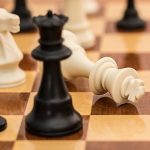In today’s information age, reading is an essential skill that we need to master to thrive in both our personal and professional lives. However, reading is not just about scanning through words on a page or screen. It’s about comprehending and processing the information effectively to gain knowledge and insights from the text. Reading better can increase our productivity, improve our communication skills, and enhance our critical thinking abilities. Whether you’re a student, a professional, or simply an avid reader, there’s always room for improvement when it comes to reading.
In this blog post, we’ll explore the best practices for reading better and improving your reading skills. We’ll provide you with practical tips and techniques that you can use to enhance your reading experience, including how to select the right materials, how to read with purpose, and how to improve your reading speed without sacrificing comprehension. We’ll also discuss the benefits of active reading and how to avoid common distractions that can hinder your ability to absorb information from the text.
1. Define your reading purpose clearly.
When it comes to reading, having a clear purpose in mind can make all the difference in improving your reading skills. Defining your reading purpose involves understanding why you are reading a particular piece of content and what you hope to gain from it. This can include wanting to learn something new, gaining insights on a particular topic, or simply engaging in leisure reading to unwind. By having a clear understanding of your reading purpose, you can tailor your approach to the content and improve your comprehension and retention. Additionally, setting a specific goal for each reading session can help you stay focused and motivated, ultimately leading to a more productive and enjoyable reading experience.
2. Preview the article’s structure.
One key strategy for effectively reading and comprehending articles is to preview their structure before diving in. This involves taking a close look at the article’s headings, subheadings, and any bold or italicized text, which can provide clues as to the main ideas and arguments that will be presented. By previewing the structure of an article, readers can gain a better understanding of its overall organization and flow, as well as identify any key takeaways or themes that may be of particular interest. This can help readers to read more efficiently, as they can focus on the sections of the article that are most relevant to their needs and interests. Additionally, previewing an article’s structure can help readers to identify any potential gaps or weaknesses in the author’s argument, which can be useful in evaluating the article’s overall credibility and accuracy.
3. Skim the article for context.
When reading an article, it’s essential to get a general sense of the content before diving in. Skimming the article for context can help you determine whether or not the article is relevant to your interests or needs. By taking a few minutes to scan the headings, subheadings, and introductory paragraphs, you can assess the article’s purpose, main points, and structure. This process can also help you identify any unfamiliar terms or concepts that you may need to research further. Skimming for context can save you time and help you focus on the parts of the article that are most important to you. So the next time you come across an article you want to read, take a moment to skim it for context before diving in.
4. Highlight unfamiliar vocabulary words.
One effective strategy to improve your reading comprehension is to highlight unfamiliar vocabulary words as you encounter them in an article or text. This technique can not only help you understand the meaning of the word in its context, but it can also expand your vocabulary and improve your overall reading skills. When highlighting unfamiliar words, it’s important to also make a note of their definition and try to use them in your own writing or conversation to reinforce their meaning. Additionally, you may consider keeping a separate list of new vocabulary words to review and practice later. By consistently highlighting and learning new words, you can enhance your reading comprehension and become a more confident reader.
5. Take notes on key points.
Taking notes on key points is an essential step in reading an article effectively. When reading, it’s easy to get lost in the details and lose sight of the most critical information. Taking notes helps keep your focus on the main points and allows you to refer back to them later. When taking notes, it’s important to keep them concise and organized. Use bullet points or a numbered list to highlight the most critical information. You can also use abbreviations or symbols to make note-taking faster and more efficient. Additionally, it’s a good idea to summarize each section of the article in your own words to ensure you understand the content fully. By taking notes on key points, you can improve your retention of information and make the reading experience more enjoyable.
6. Check for author’s credibility.
When reading an article, it is important to check for the author’s credibility. This means assessing whether the author has the relevant knowledge, expertise, and experience to be writing about the topic they are discussing. One way to do this is to research the author’s background and qualifications, such as their education, work experience, and publications. Additionally, it is important to check if the author is affiliated with any organizations or institutions that may have a bias or influence on their writing. By checking for the author’s credibility, readers can ensure that they are getting accurate and trustworthy information from a reliable source.
7. Analyze the article’s arguments.
Analyzing the arguments presented in an article is an essential part of reading comprehension and critical thinking. It involves evaluating the author’s claims, evidence, and reasoning to determine the validity of their arguments. To analyze an article’s arguments effectively, it is crucial to identify the main thesis or central claim, as well as any supporting arguments or evidence. Additionally, it is essential to consider any counterarguments or alternative perspectives that the author may have overlooked or failed to address. By analyzing an article’s arguments thoroughly, readers can develop a more nuanced understanding of the topic and form their own informed opinions.
8. Evaluate evidence presented.
When reading articles, it is important to evaluate the evidence presented in order to discern the credibility of the information being relayed. This involves assessing the sources and information provided, such as statistics and facts, and verifying their accuracy through additional research. It is also important to consider the author’s bias and potential motives for presenting the information in a certain way. By evaluating the evidence presented, you can make informed decisions about the validity of the article and the information it contains. This skill is crucial in today’s digital age, where misinformation and fake news are rampant, and being able to discern truth from fiction is essential for making informed decisions.
9. Consider alternative perspectives.
When it comes to reading articles, it’s important to approach them with an open mind and consider alternative perspectives. This means being willing to entertain ideas that may challenge your current beliefs or opinions. It also means actively seeking out diverse viewpoints and sources of information to broaden your understanding of a topic. By considering alternative perspectives, you can gain a more nuanced understanding of complex issues and develop critical thinking skills that will serve you well in both your personal and professional life. To apply this principle, try seeking out articles written by individuals or groups with differing viewpoints or from different cultural backgrounds, and actively engage with their ideas. This approach will not only make you a more informed reader, but it will also help you develop empathy and a deeper understanding of the world around you.
10. Reflect on your personal response.
The tenth step in improving your reading skills is to reflect on your personal response. After reading an article, ask yourself what you thought of it. Did it resonate with you? Did it challenge your existing beliefs or opinions? Did you learn something new? Reflecting on your personal response will not only help you understand the article better, but also help you gain insight into your own thoughts and feelings. It can also help you develop critical thinking skills and make connections between different articles or topics. Take some time to jot down your thoughts or discuss them with others to gain a deeper understanding of the article and your own perspective.
In conclusion, improving our reading skills is crucial for personal and professional development. By following the tips shared in this article, we can read better, faster, and more efficiently. Whether we are students, professionals, or simply reading for pleasure, honing our reading skills can help us retain more information, broaden our perspectives, and enhance our critical thinking abilities. With practice and dedication, we can become better readers and achieve our goals with greater ease and confidence.






